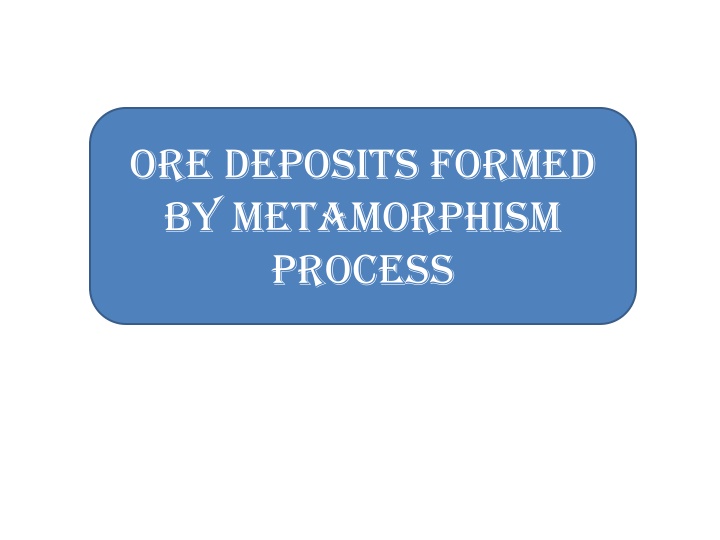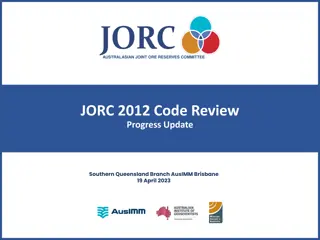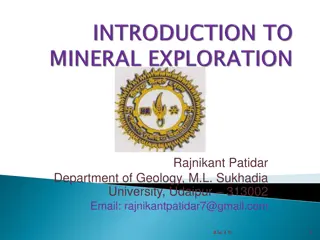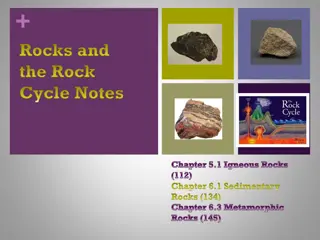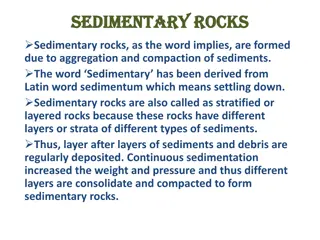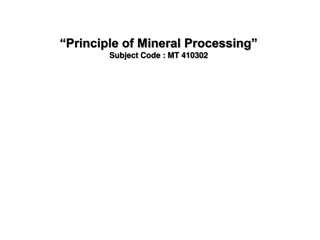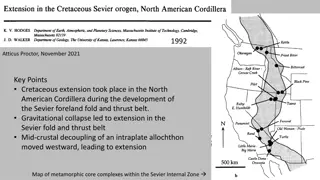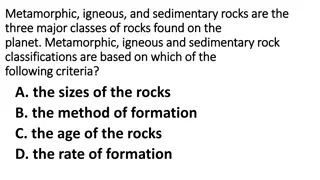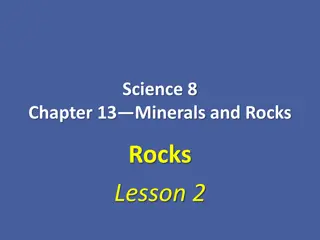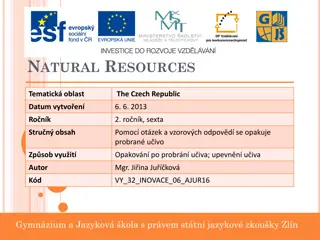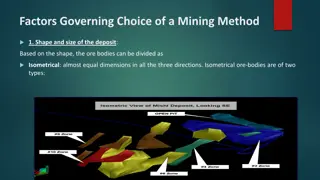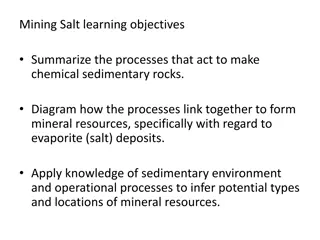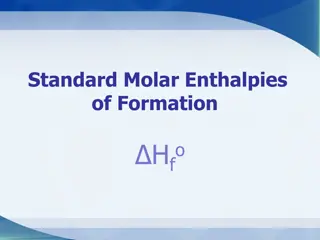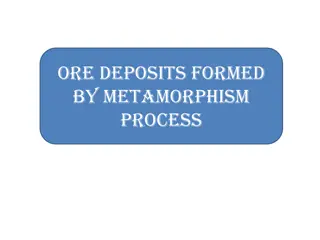Formation of Ore Deposits by Metamorphic Processes
Metamorphic ore deposits are economically significant, formed through isochemical metamorphic equilibration and recrystallization of pre-existing materials. This process involves contact metamorphism near magmatic bodies, leading to changes in fabric, mineralogy, and mineral chemistry. Grain size increase plays a crucial role in ore processing by reducing energy intensity. Skarn and contact-metasomatic deposits are products of interaction with magmatic fluids. Orogenic metamorphism at high temperatures and pressures can result in the formation of different types of ore deposits.
Download Presentation

Please find below an Image/Link to download the presentation.
The content on the website is provided AS IS for your information and personal use only. It may not be sold, licensed, or shared on other websites without obtaining consent from the author.If you encounter any issues during the download, it is possible that the publisher has removed the file from their server.
You are allowed to download the files provided on this website for personal or commercial use, subject to the condition that they are used lawfully. All files are the property of their respective owners.
The content on the website is provided AS IS for your information and personal use only. It may not be sold, licensed, or shared on other websites without obtaining consent from the author.
E N D
Presentation Transcript
Ore Deposits Formed By Metamorphism Process
Metamorphic and metamorphosed ore deposits Metamorphic ore deposits is a class that owes its economic largely isochemical metamorphic equilibration and recrystallization pre-existing material which had no use in its original state. (e.g., transformation of alumina-rich claystones kyanite/sillimanite deposits, or graphite flakes formed from dispersed bitumen). interest to re of to Contact metamorphism of ore in the heated zone around magmatic bodies is usually static (i.e., in the absence of dynamic deformation). Exposure to high temperatures (with a maximum of 750 C) affects fabric, mineralogy mineral chemistry (e.g. by driving off water and other changes increase in grain temperature. Monomineralic recrystallize into triple grain boundary junctions at angles of 120 . and volatiles). Fabric are confined to a general with rising size ores
Increase of grain size by metamorphism is important in processing of coarse ore is less energy intensive. practice, because Sulphur release (e.g. from pyrite) may induce formation pyrrhotite or even magnetite. Iron oxide ore at contacts may recrystallize to a different oxidation state (e.g. haematite to magnetite) controlled by the oxygen activity imposed by heated country rocks. of metamorphic magma or by Oxidation/reduction sulphidation/desulphidation during metamorphism: and reactions
Skarn and contact-metasomatic ore deposits are intimately related to thermal aureoles of magmatic intrusions. They may be said to be products of contact metamorphism, but the causal agent is the interaction with magmatic fluids and not simple change by heating. Therefore, it was discussed in the magmatic domain.
Orogenic (regional) metamorphism of ore deposits is common. Temperatures may reach 1100 C and pressures 30 kbar. Under these conditions, volatiles (water, etc.) are partly to wholly (at very high metamorphic from the system. Metamorphic rocks exhibit grain coarsening, minerals fabric penetrative foliation). grades) removed preferred and schistosity, orientation of a (e.g. Under conditions, and carbonate and silicate caused, for example, formation of the diagenetic-metamorphic skarn rocks in Sweden. Elevated metamorphic silicates pyroxene, stilpnomelane, etc.) conserve the geochemical halos of Sedex ore deposits and are useful prospecting tools. regional oxides, especially manganese, metamorphic of iron react readily minerals. with This Mn-contents of (garnet,
Ores metamorphic fluids. The metamorphic fluids can be considered as solutions that are in equilibrium with host rocks, and although they are dilute, their sheer mass allows significant dissolved matter. could also be formed from Example of dehydration reactions at the transition from amphibolite: greenschist to transfer of Metamorphic fluids originate primarily by chemical release (devolatilization). Increasing metamorphism, from sub- greenschist facies produces a steady flow of metamorphic dehydration fluids and a decrease of volatiles in the respective metamorphic rocks. Water in mainly minerals and in fluid inclusions. Grain boundaries also host tiny inclusions. Some fluids fill open fissures and the pore space. metamorphic OH-groups rocks occurs of hydrous to anatexis, in Shales contain 4 wt.% water in contrast to mica schist with 2%. By exothermic reactions, basalt during the formation of greenschists to a maximum of carbonates lose CO2 due to generation of metamorphic calcsilicate minerals. Fluids liberated from rocks undergoing prograde metamorphism economically interesting trace (e.g. gold) or other elements (arsenic), either together with the volatiles H2O, F and Cl from the lattice of transforming minerals. acquire metals assimilates water 13%. Siliceous
Diagram illustrating the relationship between different fluid types and various hydrothermal ore deposit types
